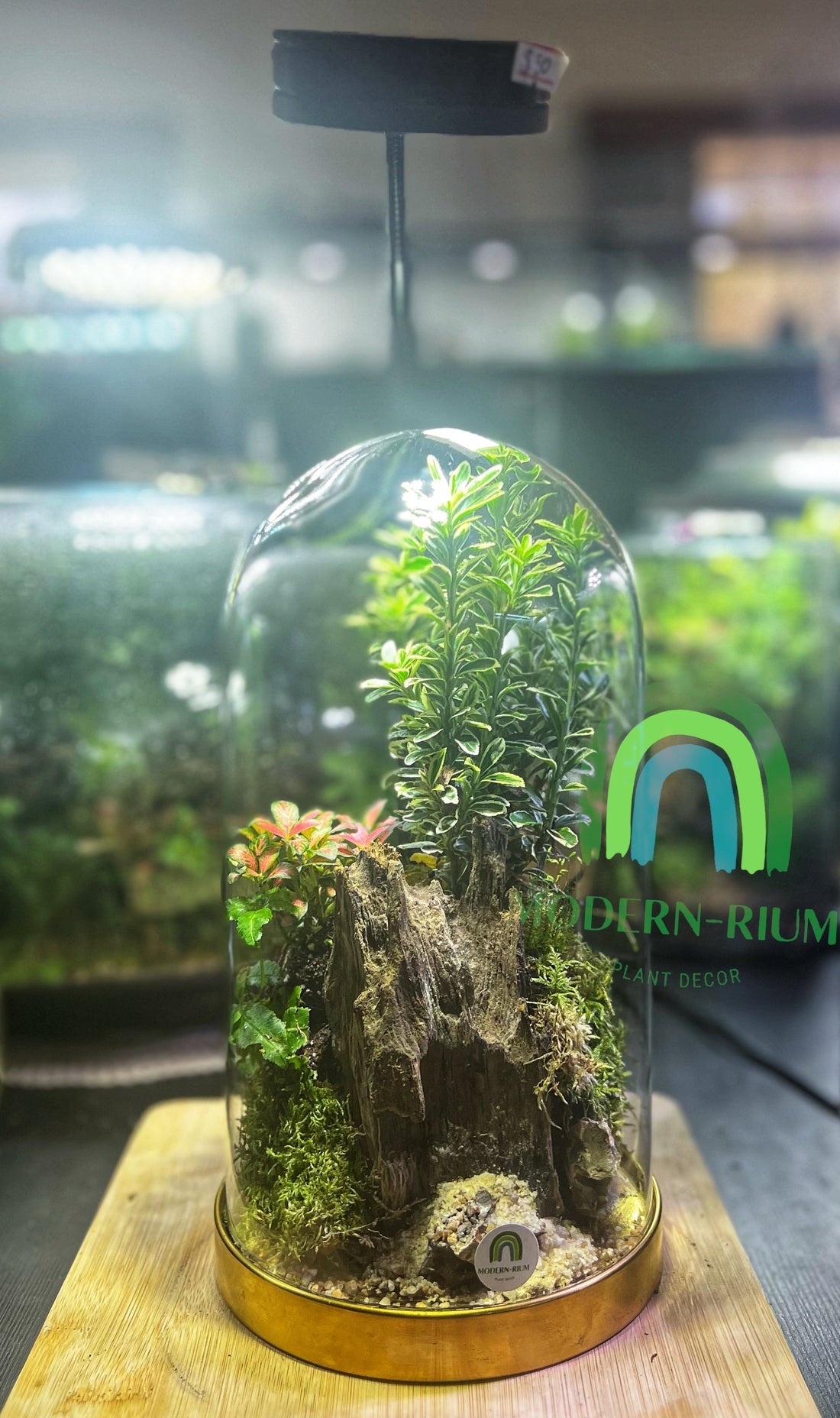
The Science Behind Terrariums: How These Mini Ecosystems Sustain Themselves
Danny PhamShare
A closed terrarium is a miniature, self-sustaining ecosystem that mirrors the natural cycles of the Earth. Once set up correctly, it requires little to no maintenance, as it recycles water, nutrients, and gases in a continuous loop. But how exactly does this tiny world sustain itself? Let’s break it down step by step.
1. The Water Cycle: Nature’s Built-In Irrigation System
One of the most critical components of a self-sustaining terrarium is its water cycle. Inside a sealed glass container, water moves through a continuous loop, ensuring plants get the hydration they need without external watering.
How It Works:
- Evaporation: Water from the soil, plants, and any initial misting turns into vapor due to heat inside the terrarium.
- Condensation: As the vapor rises and touches the cooler glass walls, it turns back into liquid, forming tiny droplets.
- Precipitation: These droplets eventually fall back onto the soil and plants, completing the cycle.
🔹 Why It’s Important: This process keeps the plants hydrated without requiring manual watering. It prevents drought conditions and ensures that water is efficiently recycled within the terrarium.
2. Photosynthesis: The Oxygen Factory
Plants play a vital role in maintaining the balance of oxygen and carbon dioxide inside the terrarium. Through photosynthesis, they produce their own food and release oxygen.
How It Works:
- Plants absorb carbon dioxide (CO₂) from the air inside the terrarium.
- Using light energy (from the sun or artificial light), they convert CO₂ and water into glucose (food) and oxygen (O₂).
- Oxygen is released into the air, enriching the terrarium’s atmosphere.
🔹 Why It’s Important: The oxygen produced during the day provides the necessary air for plants to perform cellular respiration at night, maintaining a balanced gas exchange cycle.
3. Respiration: Plants "Breathing" at Night
While photosynthesis happens during the day, plants also engage in cellular respiration, which occurs both day and night.
How It Works:
- Plants use the glucose they created during photosynthesis to generate energy.
- In this process, they consume oxygen and release carbon dioxide back into the air.
- This CO₂ is then reused in photosynthesis when light is available.
🔹 Why It’s Important: This continuous cycle ensures that the air inside the terrarium remains balanced, preventing oxygen depletion and sustaining plant life.
4. The Role of Microorganisms: Nature’s Recycling Team
Beneath the surface, countless microorganisms (like bacteria and fungi) work quietly to break down organic matter, playing a crucial role in nutrient recycling.
How It Works:
- Dead plant material, fallen leaves, and decaying roots decompose over time.
- Beneficial bacteria and fungi break down this organic matter into simpler nutrients.
- These nutrients are reabsorbed by the plants through their roots, fueling new growth.
🔹 Why It’s Important: This natural decomposition process keeps the soil nutrient-rich, eliminating the need for external fertilizers and ensuring plants always have access to essential minerals.
5. Self-Regulating Humidity and Temperature
A well-balanced closed terrarium naturally regulates its own humidity and temperature to maintain a stable environment.
How It Works:
- The glass container traps heat and moisture, creating a warm, humid microclimate perfect for tropical plants.
- Water evaporating and condensing inside prevents excessive dryness.
- If the terrarium overheats or becomes too humid, briefly opening the lid allows excess moisture to escape, resetting the balance.
🔹 Why It’s Important: This controlled environment mimics natural ecosystems, ensuring the plants thrive with minimal intervention.
Why Closed Terrariums Rarely Need Maintenance
Thanks to these interconnected processes, a self-sustaining terrarium functions almost independently. Here’s why it rarely needs human intervention:
✅ No Frequent Watering Needed: The internal water cycle keeps the soil hydrated.
✅ No External Fertilizers: Microorganisms recycle nutrients from decomposing matter.
✅ Oxygen and CO₂ Stay Balanced: Photosynthesis and respiration maintain air quality.
✅ Self-Regulating Humidity: The sealed container retains moisture without becoming too wet or too dry.
When properly set up, a closed terrarium can last years without significant care, creating a beautiful and functional example of nature’s self-sustaining systems.
Final Thoughts: A Living Lesson in Ecology
A closed terrarium is more than just a decorative piece—it’s a living demonstration of Earth’s natural cycles in action. By mimicking the processes that sustain life on a global scale, terrariums offer a fascinating, low-maintenance way to observe the intricate balance of nature.
Creating your own closed terrarium isn’t just a fun DIY project—it’s an opportunity to witness the incredible ways ecosystems sustain themselves, even in the tiniest of spaces. 🌿✨
 is here! Shop now, pay later in 4 easy installments
is here! Shop now, pay later in 4 easy installments












